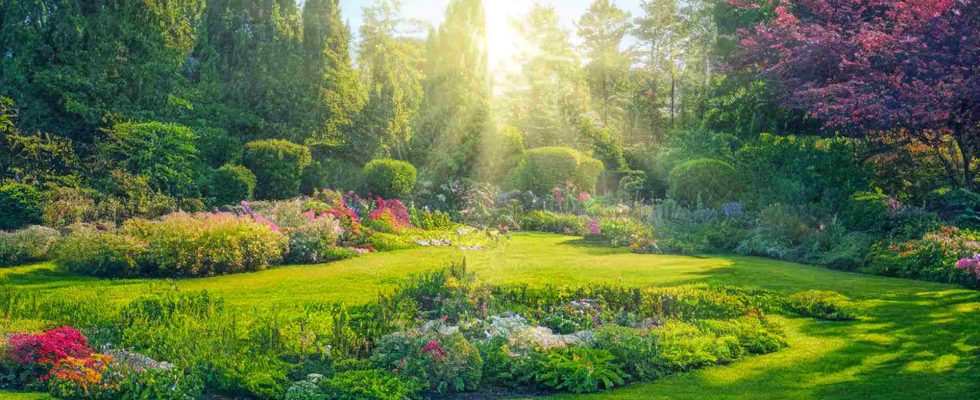1. Pink Chinese dogwood (Cornus kousa var. chinensis ‘Miss Satomi’)

Abundant soft pink then bright, reddish flowering around mid-June, on branches becoming horizontal under the weight of the corollas. A few red-orange fruits follow them, but it is above all its wine color which gives it a second period of glory in autumn.
Requirements: Fresh soil (clay or loamy, may be slightly calcareous), location sheltered from the wind. Sun, but not too hot. This grafted tree flowers from an early age.
2. Golden-leaved honeylocust (Gleditsia triacanthos ‘Sunburst’)

Very fine foliage, bright yellow lluminous in spring and autumn, characterizes this tree adapted to difficult situations and poor soils. Ideal for providing light shade near the house (the leaves do not block the gutters).
Requirements: A bright but not hot situation, in ordinary soil, not too humid. It tolerates wind better than other gleditsia varieties. Very hardy and fast growing. Easy to prune.
3. Cinnamon maple (Acer griseum)

Magnificent bark all year round, with a beautiful cinnamon color and which flakes off into leaves like those of a cigar. Arborescent habit from a very young age. Very pretty leaves with three leaflets, soft green in spring, dark green in summer, scarlet in autumn.
Requirements: It accepts all soils, even limestone, provided they remain fresh, and prefers a location protected from the wind. Growth is slow, but the tree is never bulky and requires pruning.
4. Ornamental hawthorn (Crataegus oxyacantha)

This magnificent little forgotten tree produces an abundant red, pink or white bloom, single or double. The simple ones offer numerous red fruits, very decorative in autumn and valuable for wildlife. Excellent in many situations, but especially in the countryside.
Requirements: For any soil (even very clayey or limestone), in full sun or partial shade. Resists wind and very severe frosts (beyond -25°C). Supports pruning very well, even severe.
Compose “bouquets”
It is often advisable to leave at least 7 m between two trees. This results in somewhat dull arboretum gardens. Don’t hesitate to plant your trees in “bouquets” to multiply the attractions: one for the bark, one for the flowers, one for the fall colors…
The shapes and silhouettes then become more picturesque, and the growth of the trees is slower: a good thing when space is not expandable…
Our tip: Juxtapose flowering trees with others with colorful foliage to create very spectacular groups.

